Tips to Maintain My Garden After House Moving: Simple Steps for a Smooth Transition
Moving to a new home can be both exciting and challenging, especially when it comes to your beloved garden. After settling into your new place, you might wonder how to best take care of your plants in a new environment. It’s essential to know the right steps to ensure your garden thrives after the move.

Adapting your plants to a different setting requires some attention and care. With the right tips and techniques, you can make this transition smooth and successful. Your garden can flourish and continue to be a beautiful and vibrant part of your new home.
1) Start with a Soil Test

Start by gathering soil samples from different areas of your garden. Use a trowel to dig down about 6 inches. Collect the soil in a bucket.
Mix all the samples together. Remove any rocks or roots. This gives you a more accurate picture of your garden soil. Understanding your soil’s pH and nutrients is key.
For detailed steps, check this Beginner’s Guide. Testing helps you decide if you need to add lime or sulfur. Your plants will thank you later.
2) Choose Native Plants

Native plants are a fantastic choice for your garden after moving. These plants have evolved naturally in the region, making them well-suited to the local climate and soil conditions.
Using native plants can reduce the need for extra watering and pesticides. These species are often more resilient and easier to maintain.
Selecting native plants also helps support local wildlife. Birds, bees, and butterflies are more likely to visit your garden if it includes plants they recognize.
To get started, research which plants are native to your area. Websites like Grow Native! offer helpful guides and plant lists.
3) Set Up an Irrigation System

Setting up an irrigation system ensures your garden gets the right amount of water. For most vegetable and flower gardens, consider using a drip irrigation system, which helps save water and directs it to the plants’ roots.
Avoid tree roots when installing your system. The root structure often matches the tree canopy size. Aim for a depth of about 10 inches to avoid damage from tree roots and maintain effectiveness.
4) Create a Mulching Routine

Set a regular time for adding and checking mulch in your garden. This helps keep moisture in the soil and suppresses weeds.
Use materials like bark, straw, or grass clippings. Apply to a depth of around 2-4 inches, depending on the type of mulch.
Create a barrier using stones or bricks to stop mulch from washing away.
Water the soil before applying the mulch for better results. Make sure to leave a gap around plant stems to avoid rot.
5) Prune Regularly
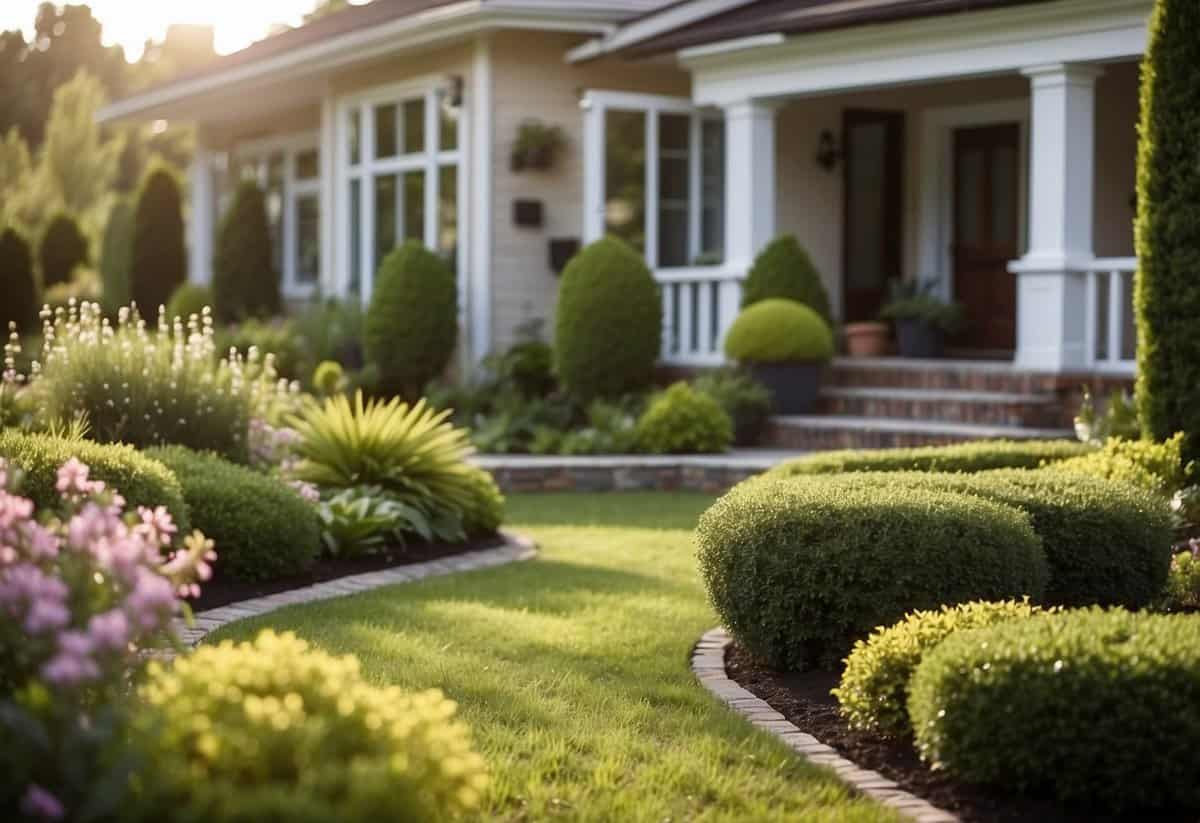
Pruning is key to keeping your garden healthy and beautiful. Trim back excess branches, runners, and other overgrowth. This helps your plants focus their energy on flowering or fruiting.
Regular pruning prevents plants from becoming overgrown. It also stops them from taking over the space. Remember, garden scissors are best for soft, thin stems. Bypass pruners work well on live stems, while anvil pruners are ideal for dead stems. Keep your garden tools sharp and clean for the best results.
6) Use Organic Fertilizers
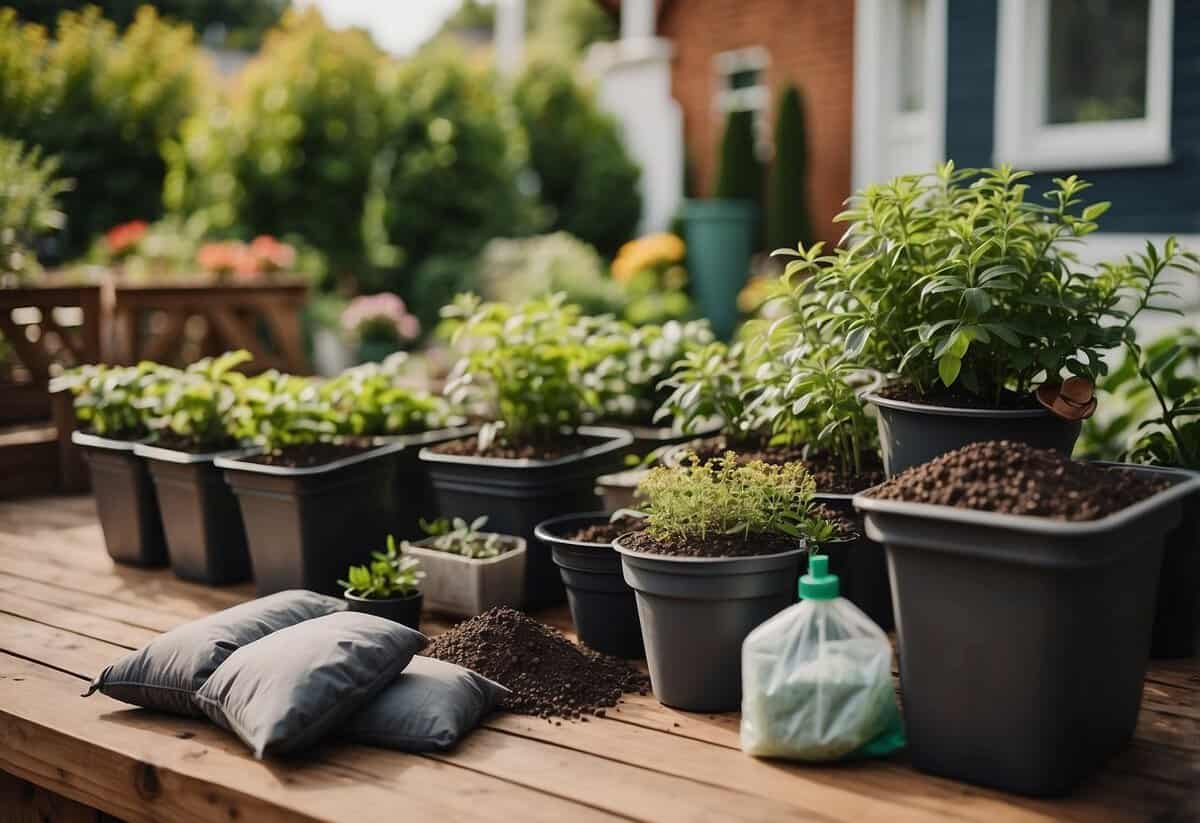
Organic fertilizers can keep your garden healthy and thriving. They provide essential nutrients like nitrogen, phosphorus, and potassium, which are crucial for plant growth. Plus, they improve soil structure and encourage the presence of beneficial microorganisms.
To use organic fertilizers, sprinkle them around your plants or mix them into the soil. Organic options like alfalfa meal or compost are great choices. This can enhance your garden’s overall health and productivity.
Remember, organic fertilizers are gentle on plants and promote long-term soil health. So, make them a regular part of your garden care routine!
7) Rotate Planting Spots
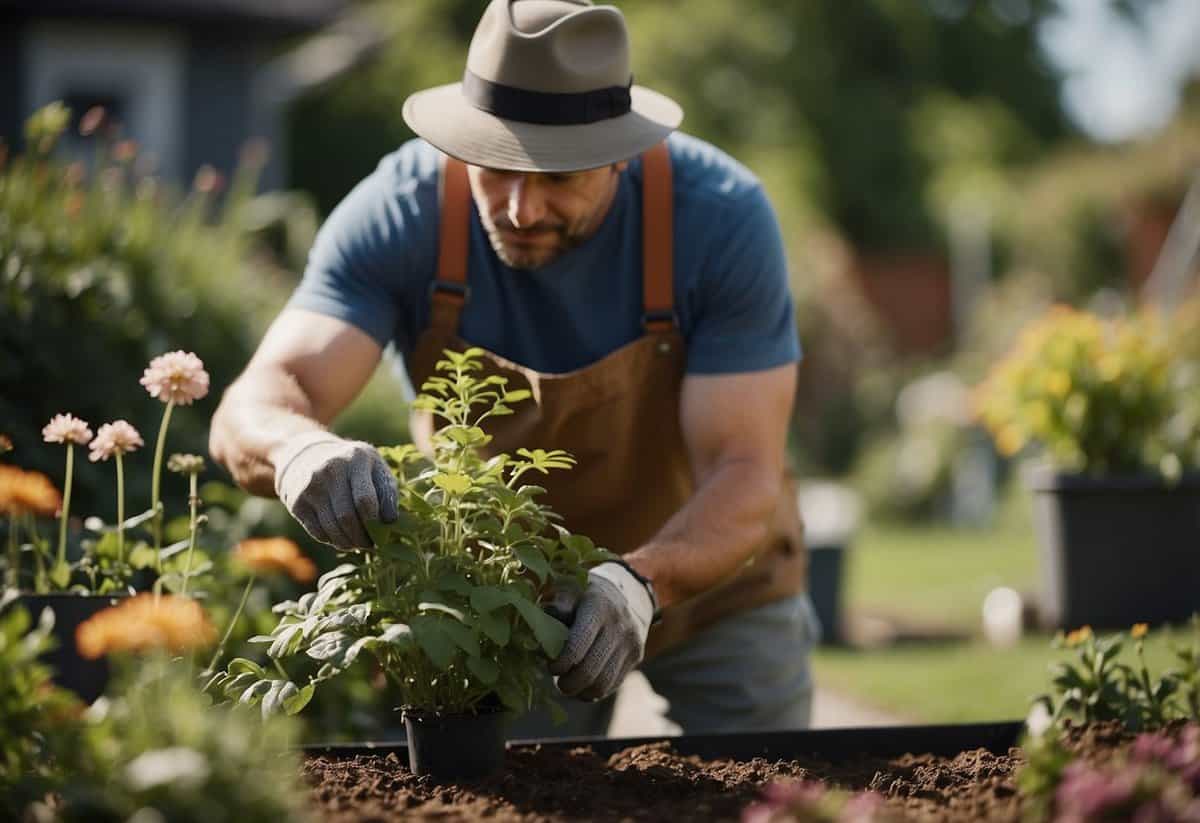
Rotate your plants to keep your garden healthy. By changing where each type of plant grows each year, you reduce problems with pests and diseases. Pests and diseases can’t settle in one spot.
Crop rotation also helps maintain soil nutrients. For example, you can plant heavy feeders like tomatoes where beans or peas grew before. This keeps the soil balanced and fertile.
For more details, check out these crop rotation tips.
8) Check for Pests Frequently
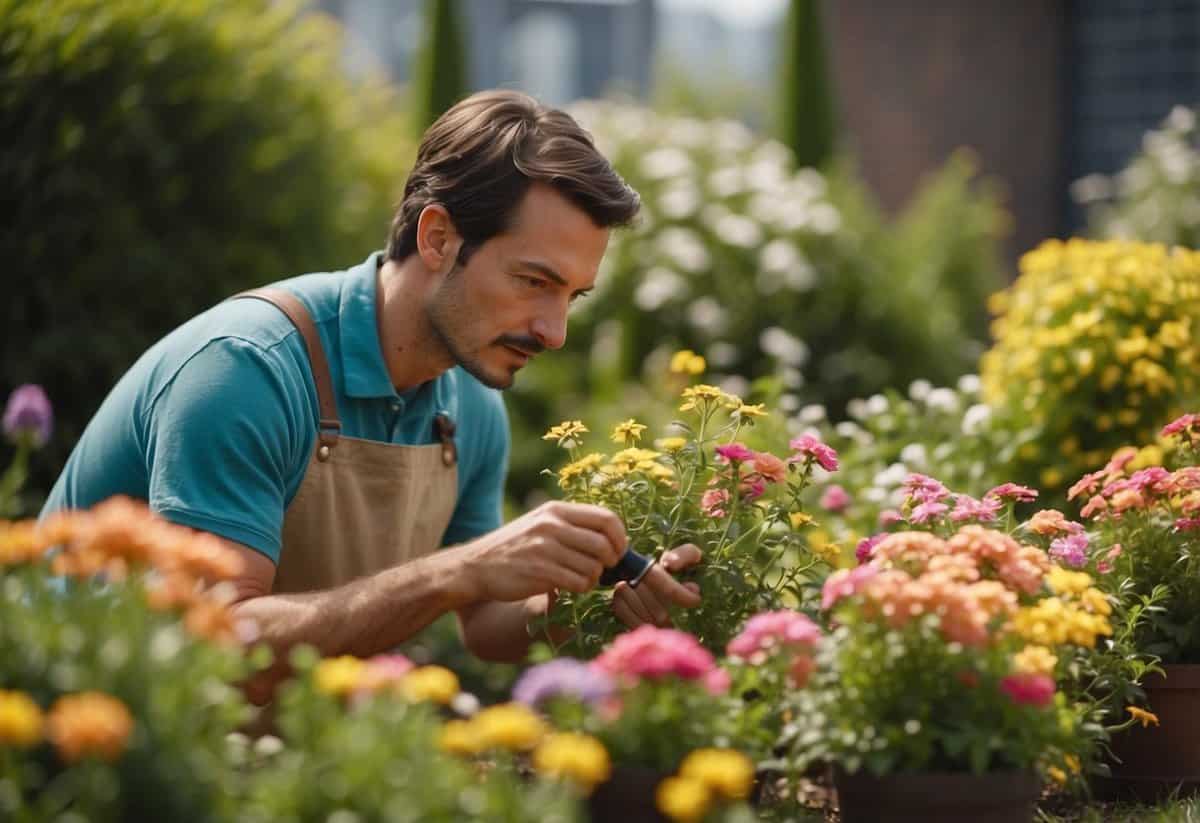
Pests can quickly become a problem in your garden. Make it part of your routine to check for them. Look under leaves, at plant nodes, and even in the soil for signs of pests.
You should also look for eggs, larvae, and other waste from pests. Regularly checking will help you address any issues before they get out of hand.
9) Weed Your Garden Weekly

Weeding your garden every week helps keep your plants healthy. Weeds steal nutrients and water from your flowers and vegetables.
When you see a weed, pull it out by the roots to stop it from growing back. Use tools like a hoe or a small hand fork.
Regular weeding also makes it easier to manage your garden. It prevents weeds from spreading and keeps your plants thriving. For more tips, check out this guide on weeding your garden.
10) Add Compost Annually
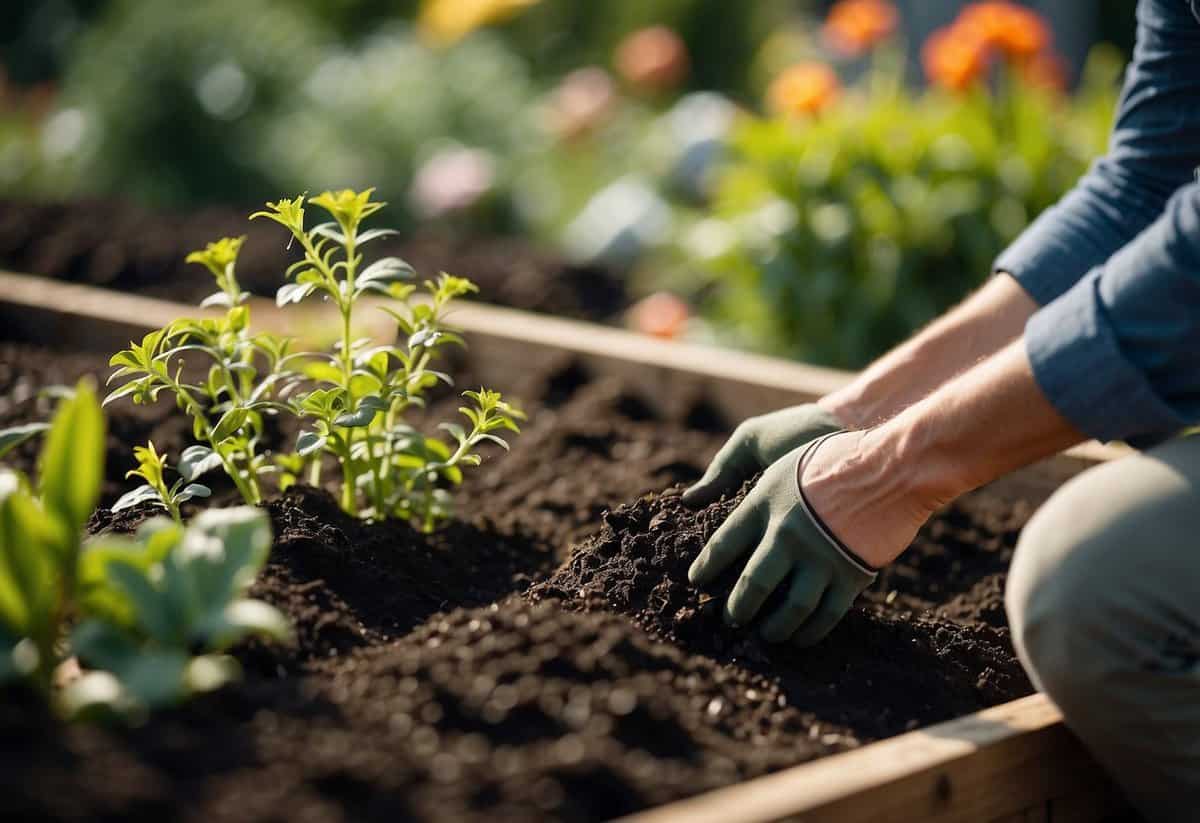
Adding compost every year helps keep your garden soil rich and healthy. Compost adds nutrients, improves soil structure, and maintains moisture levels.
Before planting new crops, spread a few inches of compost on your garden beds. Then, gently work it into the top layer of soil using a garden fork or spade.
Keep an eye on your compost pile during the year. Make sure it stays moist but not soaked and turn it occasionally. This practice ensures your compost is ready for use when it’s time to add it to your garden.
Regularly adding compost can keep your garden thriving.
Understanding Your New Garden Environment

When you move to a new home, it’s important to understand how the new environment will affect your garden. Key areas to focus on include the soil quality, the patterns of sunlight, and the plant species that thrive locally. Understanding these elements will help your plants adjust and thrive.
Assessing Soil Quality
Start by examining the soil in your new garden. Different areas have different types of soil, which can affect plant growth. You can begin by digging a small hole and feeling the soil with your hands. If it’s sandy, it will drain quickly but may need more watering. If it’s clay, the soil may retain water well but might have poor drainage.
Consider getting a soil test kit from a garden center. This will help you determine the pH level and nutrient content. Knowing these details can guide you in choosing plants that will thrive or in amending the soil to better suit your garden’s needs. Remember, healthy soil is the foundation of a healthy garden.
Identifying Sunlight Patterns
Observe how sunlight moves across your garden throughout the day. Different plants require varying amounts of sunlight, so understanding these patterns will help you decide where to place your plants. Take notes on which areas receive full sun, partial shade, or are mostly shaded.
For instance, vegetables like tomatoes and peppers need lots of sunlight, whereas ferns and hostas thrive in shade. Use this information to plan your garden layout effectively. This step is crucial because the right amount of sunlight will support healthy growth and blooming in your garden.
Recognizing Local Plant Species
Learn about the plants that are native to your new area. These plants are adapted to the local climate and soil conditions, making them easier to grow and maintain. Visit local garden centers, talk to neighbors, or do some online research to identify these species.
Integrating local plants into your garden can also benefit local wildlife, such as bees and butterflies. Plus, native plants can often fend off pests and diseases better than non-native species. This knowledge will help you create a garden that is both beautiful and environmentally friendly.
Creating a Maintenance Schedule

Maintaining your garden after moving requires a structured approach. Focusing on daily, weekly, and seasonal tasks ensures that your garden remains healthy and vibrant.
Daily Tasks
Start by examining your garden for any signs of problems. Check for weeds and remove them promptly. Look for pests and diseases on your plants. Address these issues right away to prevent them from spreading.
Monitor soil moisture by sticking your finger about an inch into the soil. If it feels dry, it’s time to water. Depending on the weather, you might need to water more frequently. During hot or dry periods, pay extra attention to the moisture levels.
Harvest ripe fruits and vegetables frequently to encourage new growth. This way, your plants remain productive throughout the season.
Weekly Check-ups
Set aside time each week for deeper maintenance tasks. Pruning and trimming are essential to keep your plants healthy and looking their best. Remove dead or overgrown branches to promote better air circulation, which helps prevent disease.
Fertilization is another important aspect. Use the right type of fertilizer for your plants, following the label instructions for amounts and application frequency. This ensures that your garden gets the necessary nutrients.
Take care of your gardening tools by cleaning and inspecting them regularly. This extends their life and helps prevent the spread of disease. Store them in a dry place to avoid rust.
Seasonal Maintenance
Different seasons bring different needs for your garden. In spring, start by preparing the soil and adding compost. Plant seeds and seedlings suitable for the season.
Summer requires you to focus on mulching beds to retain moisture and reduce weed growth. Prune fruit-bearing shrubs and replant strawberries after fruiting. Regularly water your plants, especially in dry weather.
In fall, clean up fallen leaves and plant debris to prevent pests from overwintering. This is a good time to plant bulbs that will bloom in the spring.
Winter doesn’t mean you can ignore your garden. Cover beds with mulch or a protective covering to shield plants from cold. Clean and store tools, and plan for the upcoming planting season. Keep an eye on any winter plants, making sure they stay healthy despite the cold.







